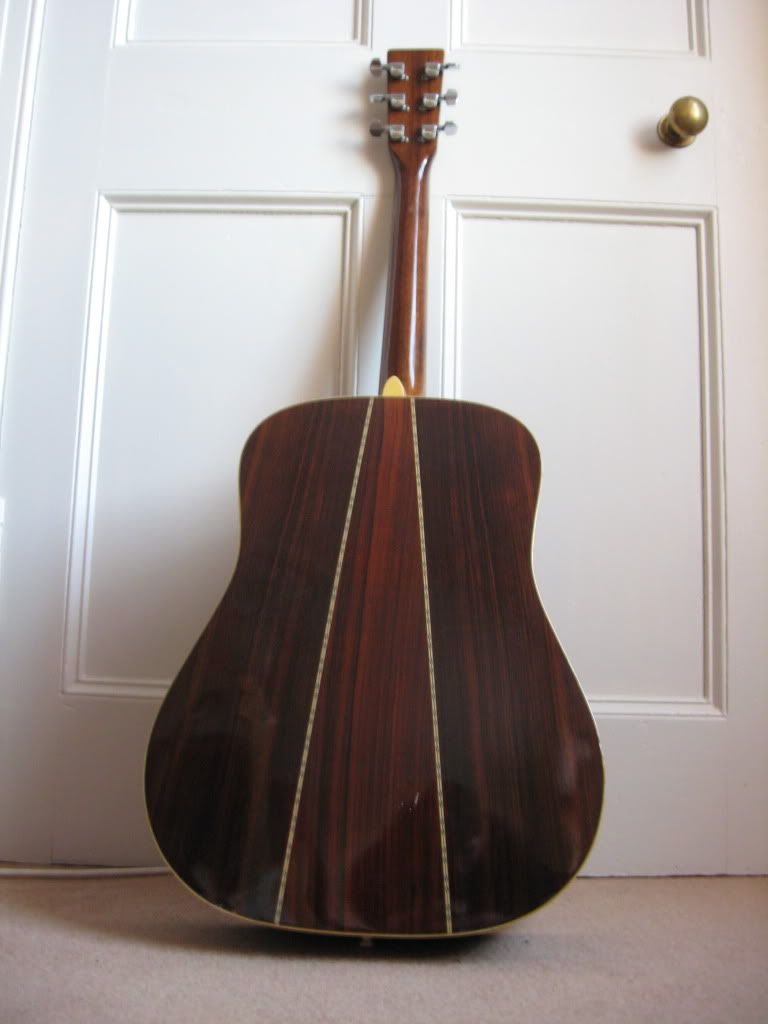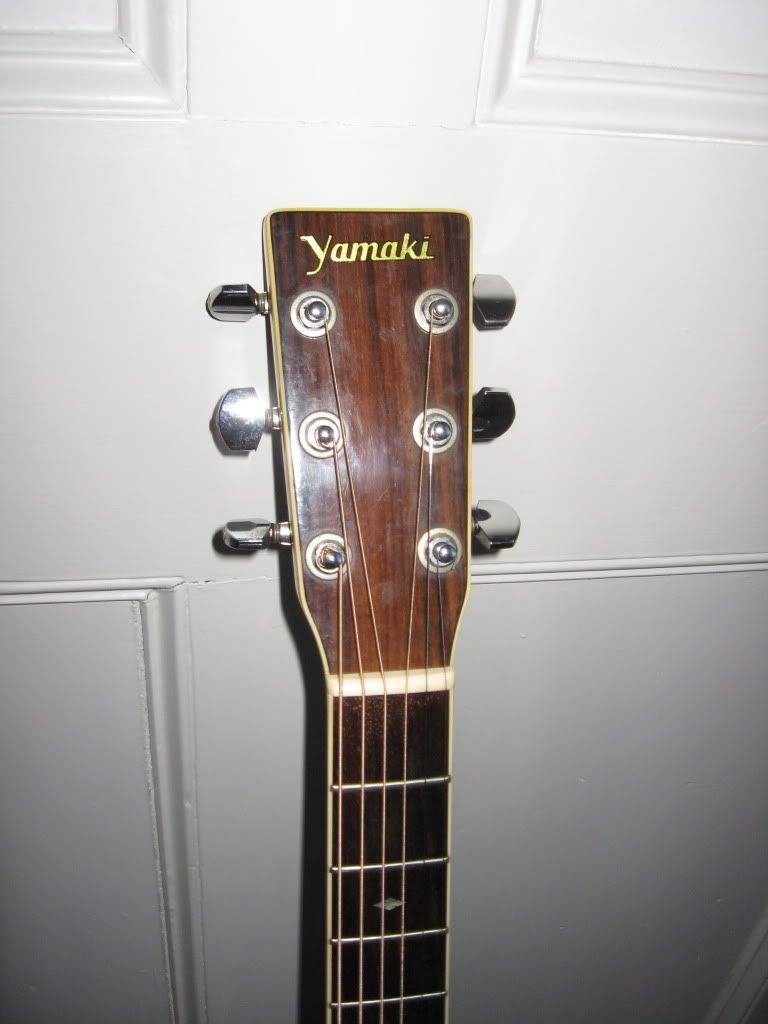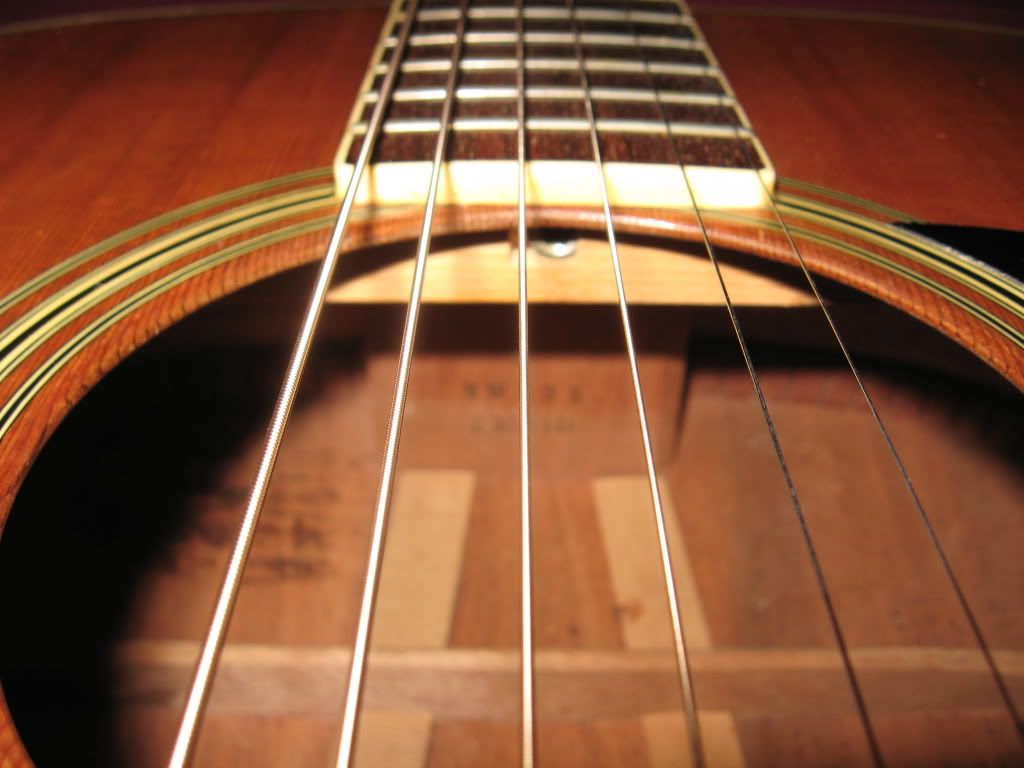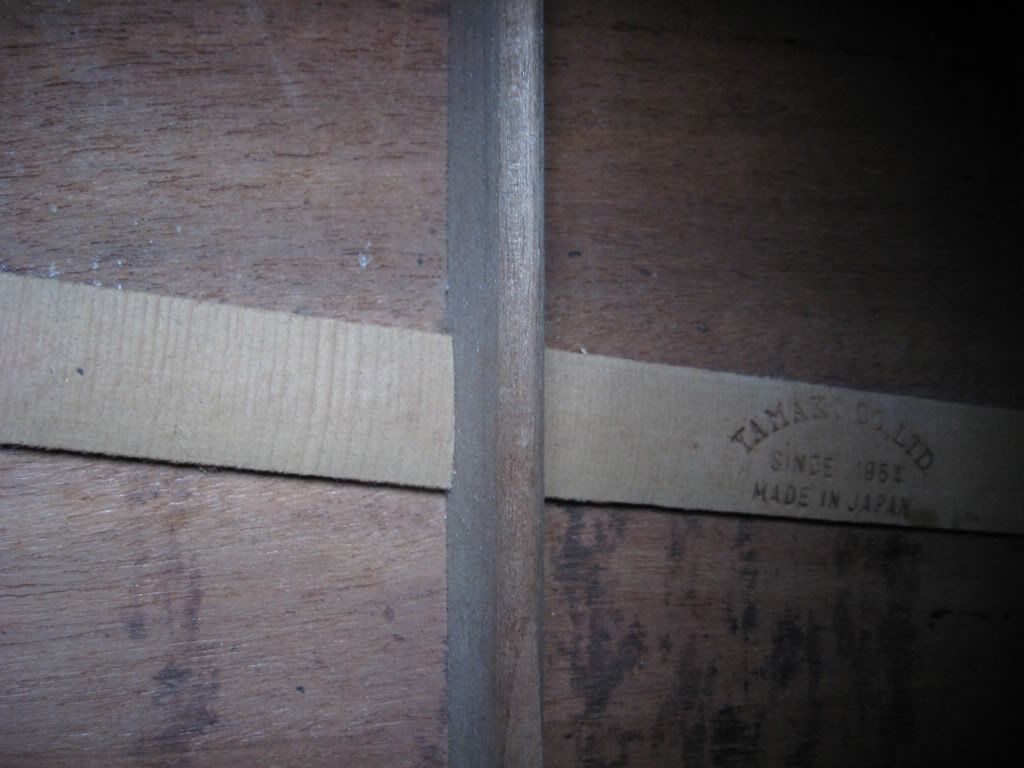Like the YW-50-12 before, this YW-35 (originally sold at 35,000 Yen), sees the Yamaki Western design body. This YW model ran along side the YM and the YD models at the same time (mid 1970s to early 1980s), with each model having a slightly different bracing design and features. This is also the case with Tokai around the same time in their Cat's Eyes series of guitars, seen with their CE, CE-CF, and CE-D models, with each suffix defining what era of Martin design the guitars bracing was based on (CE = pre-war, CE-CF = post-war, CE-D = modern). Whether in the Yamaki case, these work around the same concept and eras, i really amn't sure, but their is no escaping the Martin-basis in all their models.
Looking at the features of this YW-35, we find the soundboard is solid red-cedar. Yamaki were one of very few brands to use cedar soundboards on their dreadnought guitars, thought its use was common-place in the quality nylon strung guitars crafted in Japan at the same time. Re-known for being a warmer, softer tonewood, the use of cedar here gives this guitar a slightly different tonal character to that of some of the spruce-topped Martin based designs; highly responsive, and slightly darker, this does work wonders when matched to some pure bronze strings; their natural brightness counter-acts the overly dark and muddy realms cedar can be subject to, giving a complex and lively voice, particularly when fingerpicking. Cedar is known to open up alot quicker than spruce as well, though on a 40 year old guitar, i think plenty time has passed for both to have become more complex with age. Simple cream and black rings form the soundhole rosette, with a similarly simple purfling around the edge of the cream binding to the sides. The sides are made of Indian rosewood, whilst the back has the Martin D-35 style 3-piece back of Indian rosewood, darker cuts used on the outer flanks, with a more red-rich cut used in the centre. Wood mosaic purfling is used down each seam. A rosewood bridge and bone saddle are also found. The neck is 3-piece mahogany, with quite an antique stain that shows the grain nicely. The rosewood fingerboard features snow-flake mother-of-pearl inlays and cream binding. The headstalk is Martin shaped, faced with a rosewood veneer and Yamaki written in gold script across the top. Tuners are Yamaki-branded quality Gotoh models. Internally is the usual case for Yamaki, with the model branded on the neck block, whilst Yamaki Co. Ltd, Since 1954, Made in Japan is embossed into the wood of one back seam braces.
Yamaki do make some of the best sounded guitars from the era in Japan. Richer, fuller, more complex than a good deal of its cohorts at the same price bracket from the time, they really are worth searching out.
Here are some photos of this YW-35:






Not the best set of photographs i have taken with this guitar due to lower light conditions. I'll need to retake them on a better day.
Next up is another Yamaki model: a YD35.
Wow finally! This is my guitar. Glad to find some info. Thanks.
ReplyDeleteGreat guitar! Ive just bought a Yamaki from a friend of mine with the large Yamaki logo running down the headstock, with large mother of pearl inlay. Haven't recieved it yet but will give some more info when i do. Great site by the way!
ReplyDeleteGreat guitar! Ive just bought a Yamaki from a friend of mine with the large Yamaki logo running down the headstock, with large mother of pearl inlay. Haven't recieved it yet but will give some more info when i do. Great site by the way!
ReplyDelete